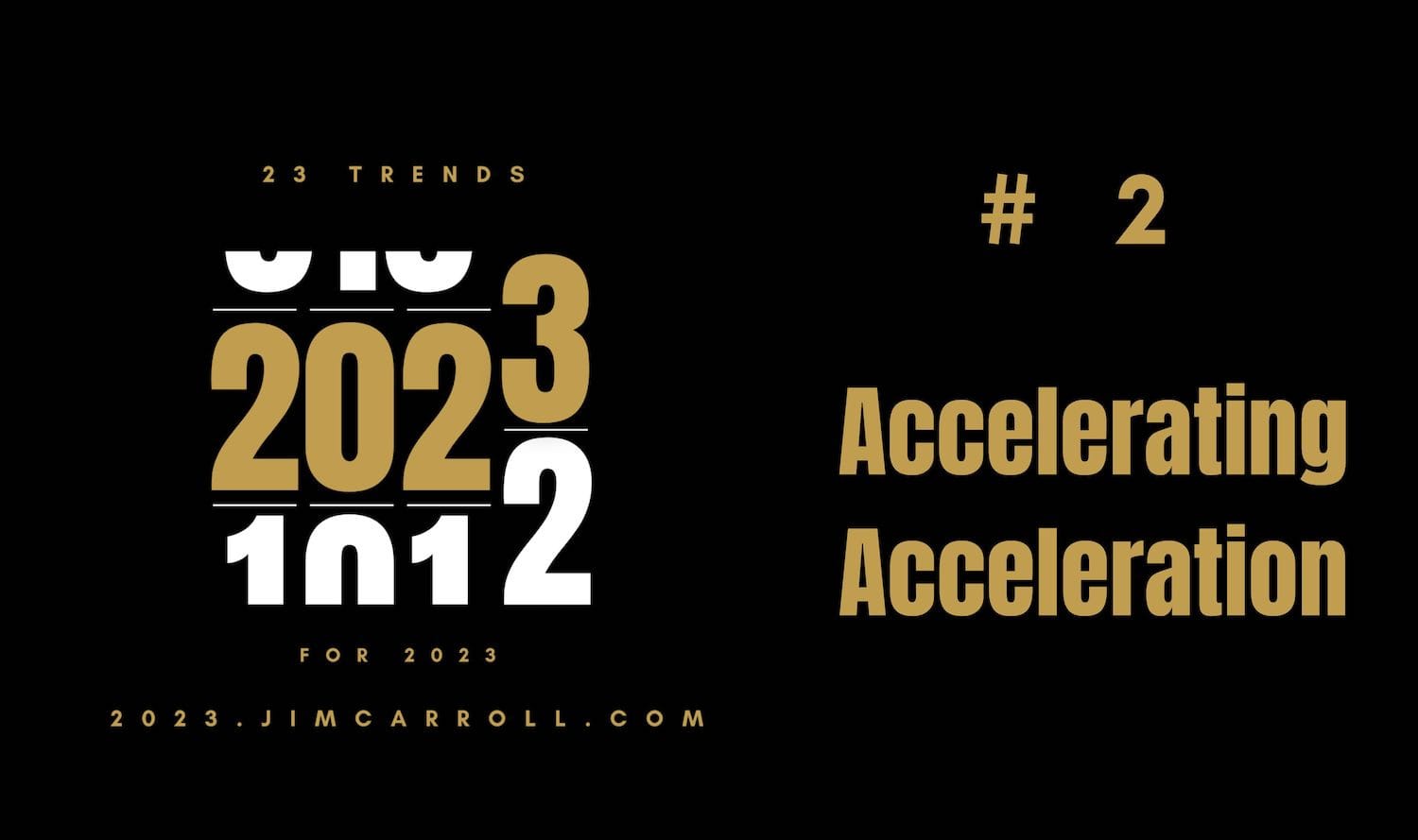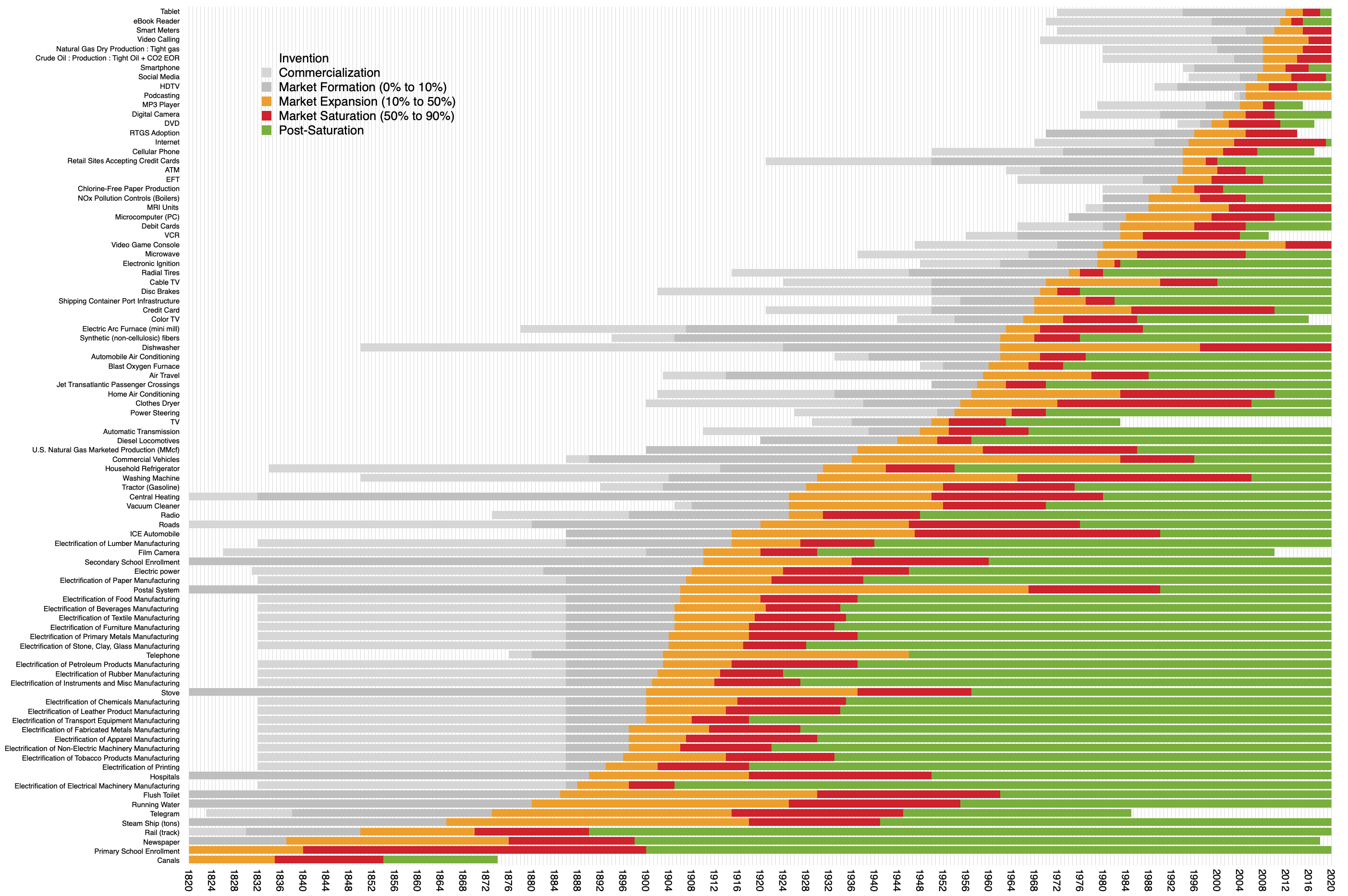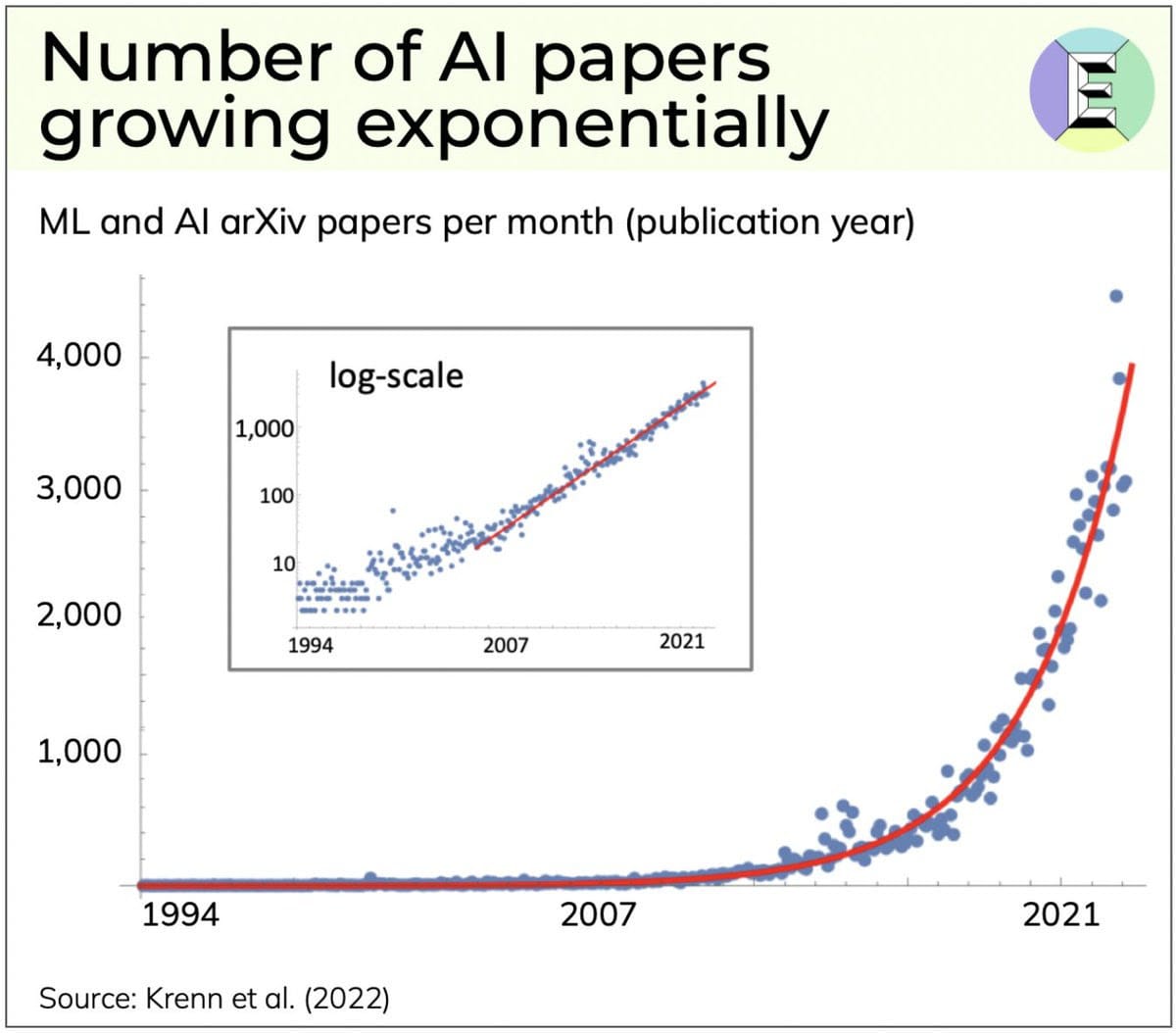Are you thinking fast enough?
I know I tend to focus way too much on the issue of speed in this daily post, but it is a huge issue! Just over 10 years ago, my book "The Future Belongs to Those Who Are Fast" was released. It's a powerful look at the implications of disruption through the acceleration of all trends and is based on many of the blog posts I wrote leading up to that time.
And trend #2 of '23 Trends for 2023' - to be released later today - is directly related to the issue of speed.

To keep things simple, there are two key graphs that I share in trend #2.
The first, although very difficult to see, has to do with the history of how quickly new products come to market, achieve market dominance, and are then replaced or hit market maturity. It's pretty clear that longevity is disappearing.

The other has to do with the number of research papers being published each year on artificial intelligence. We are, as that phrase goes, at a 'tipping point.'

A key trend going forward is that AI capabilities are coming to every product. AI is speeding up, product lifecycles are collapsing. If you thought things were fast before, watch out!
The background? Something I often talk about on stage - in the case of the image used in today's inspiration, a keynote for the World Bank in Morocco, is the issue of instant product obsolescence. In that context, one of the most profound changes to come about during the past two decades has been the collapse of product life cycles. Think about the graph in your marketing textbook from years or decades ago when you first learned about the concept of product life cycles: remember how it showed a product coming to market: sales increase, reach market maturity and eventually begin to drop off.. That’s been the model of product life cycles as taught in business schools for the past 100 years or so.
The rule of thumb was that companies would innovate and introduce a new product. If it succeeded, the company would experience growth. At some point, sales would peak. The product would then become obsolete or overtaken by competitors and sales would decline. That might involve a time period of 10, 15, or even 25 years.
What a quaint model! Too bad it bears no resemblance to today’s reality. The product life-cycle model today is being turned on its ear by instant obsolescence. In some industries, that product obsolescence now occurs during the growth stage; in the high-tech industry, the decline phase caused by instant obsolescence can occur during the introduction of a product or even before a product makes it to the marketplace. Some years ago, Lenovo pulled the plug on an iPad-like product even before it was released because it was obvious that its limited feature set had already made it irrelevant and obsolete in a very fast-paced market. The product simply had no chance of competing against the iPad. It was killed before it was even produced!
Now layer on top of this trend the fact that AI has suddenly and quickly matured. We are witnessing medical technology which can rapidly interpret data. Energy grid software that can analyze micro-grid renewable production rates and balance the grid accordingly. But it goes beyond these early use cases. We are now witnessing AI systems that can write professional e-mail messages for individuals who have natural language processing deficiencies. Many products will soon see 'embedded AI, ' with image, text, language, and video recognition built into the product. As the saying goes, 'this changes everything.'
If you take these two key trends - products last for shorter periods of time, yet every product is becoming 'smart' - the linking of the two trends above - then clearly things aren't just moving fast anymore. Something bigger is happening. And that's why I think in 2023, a key trend will be that many senior executives in many industries will come to a realization that they need to accelerate their acceleration. Many have already been focused on 'being fast' - numerous keynotes that I do for corporate offsite meetings on behalf of CEOs are focused on that message and the need for agility.
But now, something is shifting - while the world is fast, it has become even faster still.
If you want to master innovation, you need to think about how your own product life cycle is changing. And now, you need to think about how it is changing once it becomes embedded with artificial intelligence! Because what became clear in 2022 is that AI has suddenly hit its 'tipping point.' Keep watching my '23 Trends for 2023' as they roll out each day to learn why.
And so, accelerate your acceleration!
And the first step is recognizing that the size of the gap is increasing - fast!
Close the gap!
Futurist Jim Carroll first began to clue in to the issue of faster product obsolesnce when he and his wife took his young children to the Smithsonian Institution, and his young children commented that many of the computer devices in the museum were actually things he had at home. He had only bought them less than a decade before. Hence began his voyage into describing things that surround us in our daily life as 'things from the olden days.'

